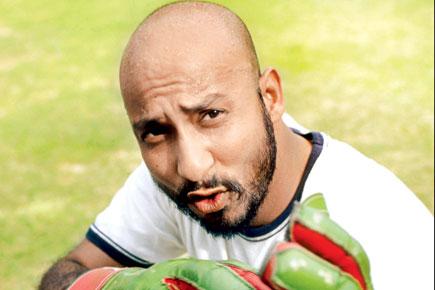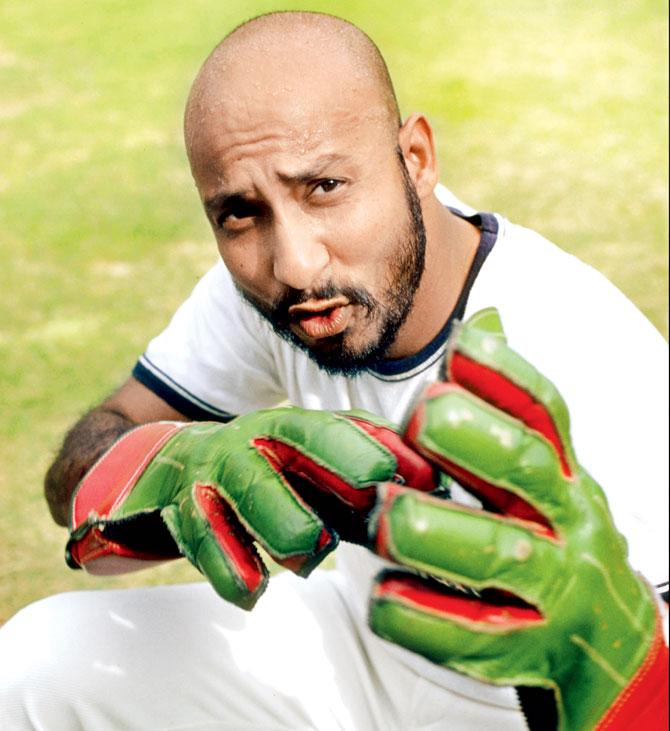Former Indian wicketkeeper to be honoured with the BCCI CK Nayudu Lifetime Achievement award today; he is regarded with respect and admiration as an elder statesman of Indian cricket, Kirmani has had an eventful career

Syed Kirmani in his playing days
To say that the BCCI CK Nayudu Lifetime Achievement award is a deserving honour for Syed Kirmani is to state the obvious. As arguably India's finest wicket keeper as different from wicketkeeper-batsman for which he would be pipped to the post by MS Dhoni, Kirmani has been a nationally known figure for nearly half a century. From the time he first displayed his talent as a member of the Indian schoolboys team that toured England in 1967 to today when he is regarded with respect and admiration as an elder statesman of Indian cricket, Kirmani has had an eventful career making sure that the fortunes of the Indian team during the time he donned the gloves from 1976 to 1986 had more ups than downs. And one of the key figures who shaped its destiny during the decade was Kirmani as the undisputed gloveman No 1.
Syed Kirmani in his playing days. Pic/Getty Images
Kirmani's work behind the stumps was brilliant enough to attract the attention of Kerry Packer's agents who were keen to sign him up for World Series Cricket. There was never any chance of Kirmani taking the bait, for the late 70s were very different days from the cricketing world of today. It was just as well for one could not imagine the Indian team in those days without the energetic and dynamic presence of Kirmani.
ADVERTISEMENT
Outstanding as his work was in standing back while keeping to pacemen, it is Kirmani's brilliance in standing up to the spinners that is remembered even today. The four bowlers were all so different that it took all of Kirmani's anticipation and his superb reading of the art and craft of the 'Fab Four' to bring off the split second stumping or the reflex action catch. His 'keeping in particular to BS Chandrasekhar was superb. One recalls how Viv Richards during a Test match in the West Indies in 1976 was baffled by a Chandra delivery. Beaten, he turned back and told Kirmani ''that was as fast as Thommo, maan'' which of course also reflects on the reflexes of the man in gloves standing just behind the stumps.
His keeping as safe as a bank, Kirmani was associated with such feats as not letting a bye through for more than three consecutive Tests against England in 1981-82 during which 1964 runs were scored and again not allowing a bye to go through when Pakistan amassed 652 runs, batting more than two days at Faisalabad the following year. His admirable work during the 1983 World Cup which saw him get the wicketkeeper of the tournament award, fittingly enough from Godfrey Evans perhaps marked the pinnacle of his career. It might be difficult to pinpoint one catch as the greatest for a cricketer who played 88 Tests but Kirmani had no doubts. He always rated the leg side snaffle from Mudassar Nazar off Kapil Dev's bowling on the first day of the Madras Test against Pakistan in January 1980 as the best. As one who was fortunate enough to see it, I would readily agree.
Kirmani's brilliance behind the stumps tends to camouflage his skill with the bat in front of them. He was a fighter, generally coming good when the side needed runs badly and was good enough to get two hundreds, the first as night watchman against Australia in 1979 and the second, five years later, against England when he shared a record seventh wicket partnership of 235 runs with Ravi Shastri. Of course, Kirmani will also be remembered fondly as a colourful character.
To say that the BCCI CK Nayudu Lifetime Achievement award is a deserving honour for Syed Kirmani is to state the obvious. As arguably India's finest wicket keeper as different from wicketkeeper-batsman for which he would be pipped to the post by MS Dhoni, Kirmani has been a nationally known figure for nearly half a century. From the time he first displayed his talent as a member of the Indian schoolboys team that toured England in 1967 to today when he is regarded with respect and admiration as an elder statesman of Indian cricket, Kirmani has had an eventful career making sure that the fortunes of the Indian team during the time he donned the gloves from 1976 to 1986 had more ups than downs. And one of the key figures who shaped its destiny during the decade was Kirmani as the undisputed gloveman No 1.
Kirmani's work behind the stumps was brilliant enough to attract the attention of Kerry Packer's agents who were keen to sign him up for World Series Cricket. There was never any chance of Kirmani taking the bait, for the late 70s were very different days from the cricketing world of today. It was just as well for one could not imagine the Indian team in those days without the energetic and dynamic presence of Kirmani.
Outstanding as his work was in standing back while keeping to pacemen, it is Kirmani's brilliance in standing up to the spinners that is remembered even today. The four bowlers were all so different that it took all of Kirmani's anticipation and his superb reading of the art and craft of the 'Fab Four' to bring off the split second stumping or the reflex action catch. His 'keeping in particular to BS Chandrasekhar was superb. One recalls how Viv Richards during a Test match in the West Indies in 1976 was baffled by a Chandra delivery. Beaten, he turned back and told Kirmani ''that was as fast as Thommo, maan'' which of course also reflects on the reflexes of the man in gloves standing just behind the stumps.
His keeping as safe as a bank, Kirmani was associated with such feats as not letting a bye through for more than three consecutive Tests against England in 1981-82 during which 1964 runs were scored and again not allowing a bye to go through when Pakistan amassed 652 runs, batting more than two days at Faisalabad the following year. His admirable work during the 1983 World Cup which saw him get the wicketkeeper of the tournament award, fittingly enough from Godfrey Evans perhaps marked the pinnacle of his career. It might be difficult to pinpoint one catch as the greatest for a cricketer who played 88 Tests but Kirmani had no doubts. He always rated the leg side snaffle from Mudassar Nazar off Kapil Dev's bowling on the first day of the Madras Test against Pakistan in January 1980 as the best. As one who was fortunate enough to see it, I would readily agree.
Kirmani's brilliance behind the stumps tends to camouflage his skill with the bat in front of them. He was a fighter, generally coming good when the side needed runs badly and was good enough to get two hundreds, the first as night watchman against Australia in 1979 and the second, five years later, against England when he shared a record seventh wicket partnership of 235 runs with Ravi Shastri. Of course, Kirmani will also be remembered fondly as a colourful character
 Subscribe today by clicking the link and stay updated with the latest news!" Click here!
Subscribe today by clicking the link and stay updated with the latest news!" Click here!







